The internet has an incredible way of spreading fabrications and miss-truths, often referred to as ‘counter-knowledge‘. Anyone with a barrow to push these days seems to produce a You-tube video, or a pithy slogan pasted over a photo that seems ‘true enough’ to be plausible, but not actually factually correct. All I need to do is log into Facebook and I’ll find an anti-vaccine, anti-flouride, anti-macdonalds, anti-meat or anti-particular-religion posting. All of which are bullshit of the highest order, but plausible bullshit. It is also often spread by lazy quasi-intellectuals that want to be perceived as holding onto some kind of secret truth.
Of late I have been particularly disturbed by what I have been seeing on my own Facebook in relation to the conflict in Gaza. I have a lot of political activist friends, and it is no surprise that they have dug in hard over the humanitarian disaster that is currently happening in that particular corner of Palestine.
It started out compassionately on my Facebook page, with calls for medical supplies and humanitarian assistance. It then turned a little darker with calls for people to rally to try and push for the Israelis to stop bombing Gaza, with highly subjective anecdotes about only innocent people being killed – at which stage I felt that the argument was becoming too one sided for me to want to get involved with. The next day my Facebook was awash with photos of dead children, and video of Hamas firing rockets. The tone had soured, and it was now friend against friend with some of the most compassionate people I know viciously ripping into each other to support their chosen side. Many of the photos and video links later turned out to have been taken in Syria, but that no longer mattered it seemed. The facts were now completely blurred, and people were emotionally demanding that I take a side in a discussion that I had no intention of taking sides in.
The conflict in Gaza may have been bloody, but the conflict on the internet was simply vile. And worse, I was about to get involved.
You see, as well as a collection of typewriters I also have a collection of coins. Several of my friends had parted ways online – never to speak to each other again, over some pretty horrific stuff, and I was feeling awful about not being able to do anything about it when a friend posted a photo of a Palestinian coin – which they declared showed that ‘Palestine existed in 1927 – long before Israel did in 1948’. I popped onto their page and pointed out that the coin had both Hebrew and Arabic on it, and that there were plenty of Jews that had been living in the area at the time. The Palestine referred to on the coin wasn’t a country – as no national boundaries existed in the area before that, but rather a defined region called ‘British Palestine’, which was governed by the British at the time.
I also suggested that they should check their history before posting such things. However they immediately replied in aggressive tones questioning my motives for writing they should that, and insisted that the coin was a ‘representation of peace’ – indicating that the coin showed that before Israel was formed as a country, Arabs and Jews lived in peace. The same post is still circulating Facebook telling of how peaceful life was back then – back before the living memory of most Facebook users.
I ended the conversation by backing down a bit in the face of the rhetoric, and posting up some articles about the history of Palestine. I also expressed that I disagreed that it was a symbol of peace, but rather something that was forged in the middle of a long running pre-existing conflict that was bloody and awful. My friend suggested that they would go and read the material, but didn’t trust it because it didn’t come from sources that they liked. The topic was never discussed again.
I still refuse to pick sides. To me this conflict is and indication of what the world would look like if conservative governments ruled every country unchallenged. I also refuse to believe that any one particular party involved on either side of the conflict can claim to be the morally superior. Every argument in support of a particular side in this conflict so far has been made by pointing at the other side, and saying how evil that side is. People supporting both sides have laid the propaganda on thick, and as such many deliberate factual fabrications have been created to win the hearts and minds of people around the world so they will apply pressure, rather than actually spend the energy finding a peaceful solution.
One thing is for sure, people will do many different things to support their friends and family overseas during such a conflict. The coin I am holding in the photo on the top of my screen attests to this. It is a 20 mil coin – a small denomination of the Palestinian Pound that was introduced by the British when they were governing the region. It is also a recent addition to my collection. While these coins don’t appear often on ebay, whenever there is a major conflict in Gaza, online sellers seem to flood the market with them. While it may be easy to accuse the sellers of funding the war, I personally choose to believe that they are selling these coins to support people that they are close to, that are caught in the conflict.
The biggest problem with the conflict in Gaza right now is the same as any war. The truth is lost in the fog of war, and it isn’t until later when the fog has passed that we can find the truth.
* * *
Typing in British Palestine
That coin at the top isn’t the only one in my collection, however all my other coins are currently locked in storage. Also in storage I have a special typewriter that is related to that coin. It is a Bijou 5 that was given to me by Rob Messenger when I visited him and his exhibition in Canberra in 2012. The machine has a large decal across the front below the space bar denoting that it as sold by ‘The Palestine Orient Co’, which had outposts in both Tel-Aviv, Haifa and Jerusalem.
While the keyboard has a few unusual keys, importantly it has a key for the british introduced local currency. LP – Palestinian pounds and mls – mils. Each mil is a 1000th of a Palestinian pound.
Sadly my Bijou 5 is currently in stooge, so I can’t access it quickly to take new photos of it, and I’m currently relying on file photos that I have on my computer.
The Bijou 5 is a brilliant typewriter to type on, and one of my all time favourites. So much so, that when a second Palestinian typewriter appeared on ebay for sale in Brisbane just before I moved to Melbourne I snapped it up. It too has the same currency denominations, and is an identical machine. Both of my Bijou’s have low serial numbers that date them back to 1920 – the year that the British established themselves in Palestine. The LP currency key however doesn’t date to this time, as the currency wasn’t established until 1927. As such there is evidence on my Bijous that the typeface and key-paper were changed at a later date to accommodate the new local currency. I still stand by that these machines were used largely for administration and banking purposes in Mandatory Palestine.
I don’t think these Palestinian machines are necessarily rare, but they are not exactly common either. A little white ago Rob shared with me some photos of a typewriter that belongs to an Israeli by the name of Erez Ravina. It is another Bijou 5 just like mine, but this one has a hebrew typeface on it. Erez’s grandfather was the original owner of this machine, and he used it to write for the first Israeli newspaper – ‘Davar’. Erez also said that his Grandfather also used this typewriter to write several books.
Erez’s machine wasn’t the only Palestinian Bijou that was used to write books. Author Iris Murdoch also had one. Iris’s typewriter went up for Auction in 2010, along with her ice-skates. If you look closely enough you can see that this typewriter also has the LP/MLS key – as well as the Palestinian Orient Co decal on the front. Iris from what I know was never in the middle-east, so I suspect that the British sold these machines off after they were returned from Palestine.
I can only imagine the things that Iris’s typewriter has seen – or my own Bijous for that matter.
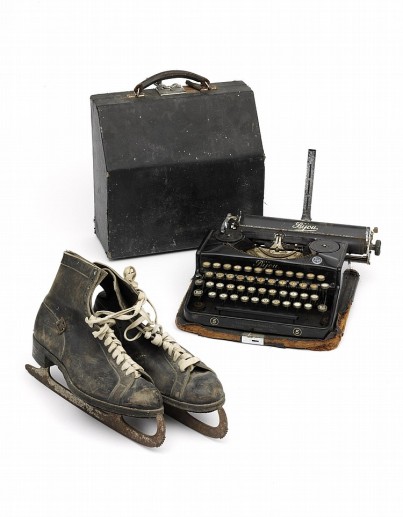
Christie’s auction photo. Click to enlarge, and you can just… JUST make out the familiar currency key on the right.
This typewriter would have seen a very different world to what we are familiar with today. From in Palestine alone a lot of history has passed, and the region is very different to what it was when these machines graced desks in that dusty land. The romanic in me imagined Palestine being filled white colonial buildings on a palm-tree lined streets that were filled with british toffs tapping at their engines of bureaucracy, with Lawrance of Arabia style characters wandering by peacefully in a parade of colour. However the truth about the country was very different.
Mandatory Palestine wasn’t established as an Arab country. In 1920 when the league of nations drew up the borders of Palestine, it was then known as ‘British controlled Jewish-mandated Palestine’. The area had been bordered off by the league of nations for use as an exclusively Jewish settlement. At the time the area also included what is today known as Palestine and Gaza.
While Mahmod King (see Facebook coin photo above) would like to think that the 1927 Palestinian coin is a symbol of more peaceful times in Palestine where both parties lived together side by side peacefully, this was far from the reality. In 1922 there were almost 600,000 muslims living in the area, while there were only 84,000 jews. The unrest quickly turned violent in 1920 – and has remained that way, if not worsening so, ever since. A difficult balancing act had begun in the region where neither side was willing to concede land to the other – and the british in the middle at times suffered horrifically. In the end the country was portioned by the british and the United Nations, thus producing the west bank and Gaza strips – both of which form the contemporary theatres of war of today’s conflict.
There’s a long list of massacres and killings that took place between 1920 and 1948 in British Palestine. As with the contemporary conflict no one can claim the moral high ground, as both sides were responsible for a long series of tit-for-tat attacks that cost hundreds of lives. The list attests the the gruesome nature of both sides striking back and forth at each other with little care for wanting to develop a peace in the region.
A compilation of the list can be found on Wikipedia – HERE.
By the time the British wrapped up their business in Palestine, declaring the region to be self-governing they had themselves suffered a huge loss of life. Not just from Arab attacks, but more brutally from Jewish bombings of british buildings – including the bombing of the King David hotel by Jewish Militants, which killed 91 people – mostly British.
As I said to my friend on Facebook, this wasn’t an era of peace at all. It was bloody and awful and there’s nothing that happened back then that either side of the conflict could be proud of. The british went in with a naive understanding of the politics of the region. If they hadn’t been so blasé, a lot could have been learned from the difficulty that the Ottoman empire had in Israel/Palestine if they had bothered to dig back into history books themselves. But today, further ignoring the history of the area, and pretending that the current conflict in the region is just a modern figment of Israeli hostility isn’t going to resolve the conflict. Nobody launches bombs or fires rockets with concern for their fellow man in their hearts. While both sides of the divide are filled with innocent people that wish to live their lives in peace, this conflict is driven by a few with blackness and hatred inside of them. These few drive the agenda in the war with little regard for human life, while trying to procure and push a wider hatred of the other-side of the conflict onto anyone and everyone.
I personally refuse to buy into this. I refuse to see people one side of the conflict as being decidedly evil, and the other side as their victims. The history of the area doesn’t bare this out. Modern memory may be filled with bloodied bodies of people blasted in the streets of Gaza, or the torn up victims of suicide bombings in Tel-aviv. But this doesn’t mean the innocent are guilty by association. I have only compassion for the people who have suffered from the violence and live with it every day – and distain for the people who continue to drive this hatred of each other.
No one is ever going to achieve peace by a victory over the other side. It can only be achieved when people start to accept that they are responsible for the lives and happiness of people on both sides of the divide. And while some people in the conflict vow to kill every last person on the other side, this is never going to happen. Yet when one side does make moves in the right direction, they soon find themselves inflicting the worst of the carnage back.
It is a terrible cycle.
* * *
On a side-note, The Palestinian currency from the British Mandate era is still legal tender. It is no longer used, as the Israeli Lira is currently the universal curency of the region, however the Palestinian Pound was never formally decommissioned.
In some ways I find it sad that so many of these coins and notes find their way onto ebay and suchlike whenever there’s a conflict in Gaza. I understand the need to raise funds to help those back home, but I do feel some sadness that something that was kept in the pockets of immigrants and refugees as they fled the region which they kept as something of a keepsake afterwards, now ends up being sold so that further funds can go into helping or hindering in such a long-running conflict.
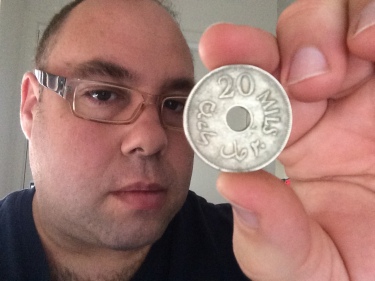
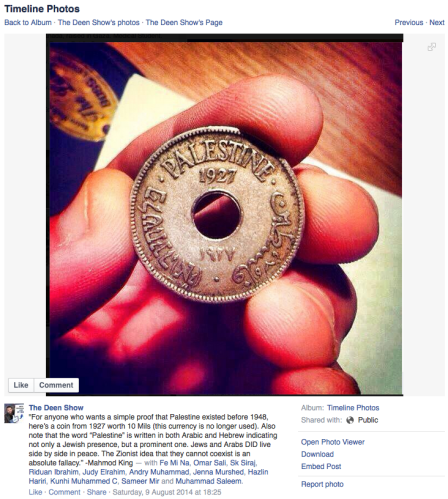

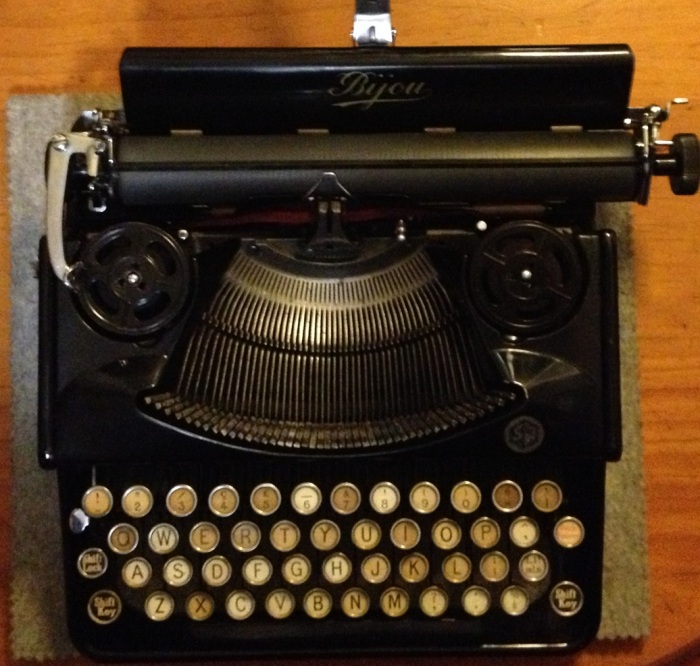
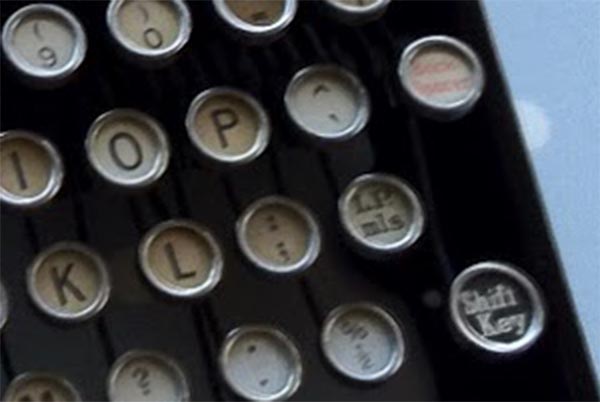


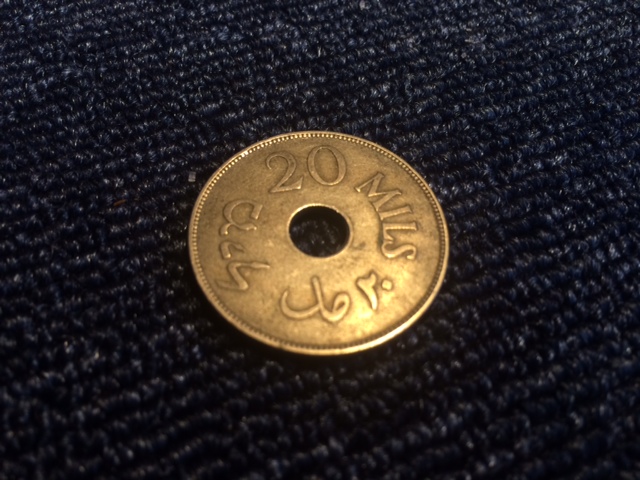


Thanks for the thoughtful post – sharing the history and present state of this strife (irreparable?). I enjoyed and learned from it.
That region is and seems to have practically always been a fuckin mess. As an American, media seems to always have that pro-jewish bias, so im ever mindful of that whenever news involving our partners are reported.
Its all fucking tragic to an annoying level at this point. The deaths and violations that go on there.
LikeLike
Thanks for that. It is a difficult subject to discuss as there are often so many pre-consived ideas and emotions involved.
I also understand the reason for the pro-jewish bias. In a lot of ways it is the blind support for one side or the other that is doing the most damage. You can’t be self critical if you’ve got so many telling you to stay the course. In this case there is also a very long running religious reason too.
But as you pointed out – It is all fucking tragic. Awful, horrible and tragic. And it is being repeated across many locations in the world, and not just the middle-east.
LikeLike
Scott, from the title of this post, I didn’t know what to expect (I’m a long-time reader.) And even then you surprised me. This is a measured consideration of the issues such as we almost never see and yet it exposes the essence. Such a contrast with the usual “news” and opinion! This understanding deserves to be much more widely spread. Thank you.
It is also interesting to note the role played by a couple of mere (relatively) hobbies in gaining the knowledge that triggered your response. An active mind does so much for us.
LikeLike
Well, I think it is easier to learn about complicated pieces of history through the things that we relate to. I felt that the Bijou typewriter was an excellent example that gives us a bit of a window into the world as it was back then.
LikeLike
An interesting and eye-opening post, with an appealingly humane and skeptical point of view. We need to preserve our little, material things made long ago, so that truths about the past—limited and uncertain though they are—have at least some chance to be rediscovered.
LikeLike
Thanks Richard. It has a hard topic to talk about because people are more interested in letting their emotions run wild. I also felt that these artefacts of history should be a lead-in to the context, not the context themselves. They’re quite important in that way.
LikeLike
Very well-done post. I am not the least bit surprised that this place was a mess long before the dates we all know. It really has become just a feud without end. I’ve long wondered why this one is what we all have to hear about and discuss when these longstanding conflicts are all over the world.
LikeLike
Thanks! Like many of the worlds conflicts, this one has a longer history than is largely acknowledged today.
LikeLike
Excellent post! We Americans have such a short view of history, and I think we really don’t understand at all that the things happening in the “old world” have roots of hatred centuries deep and continents wide. I stopped picking sides long ago, but one of the sad realities for the people embroiled in the mess is that you simply can’t *win* unless you ignore objective reality and rally your group around a fiction that the “other side” is somehow less human and less deserving of life than your side. As long as the goal is “winning”, that’s unlikely to change.
LikeLike
When I was really young, my parents kept telling me ‘no one wins a war’. It made a lot more sense as I got older, and this conflict certainly bares that out.
LikeLike